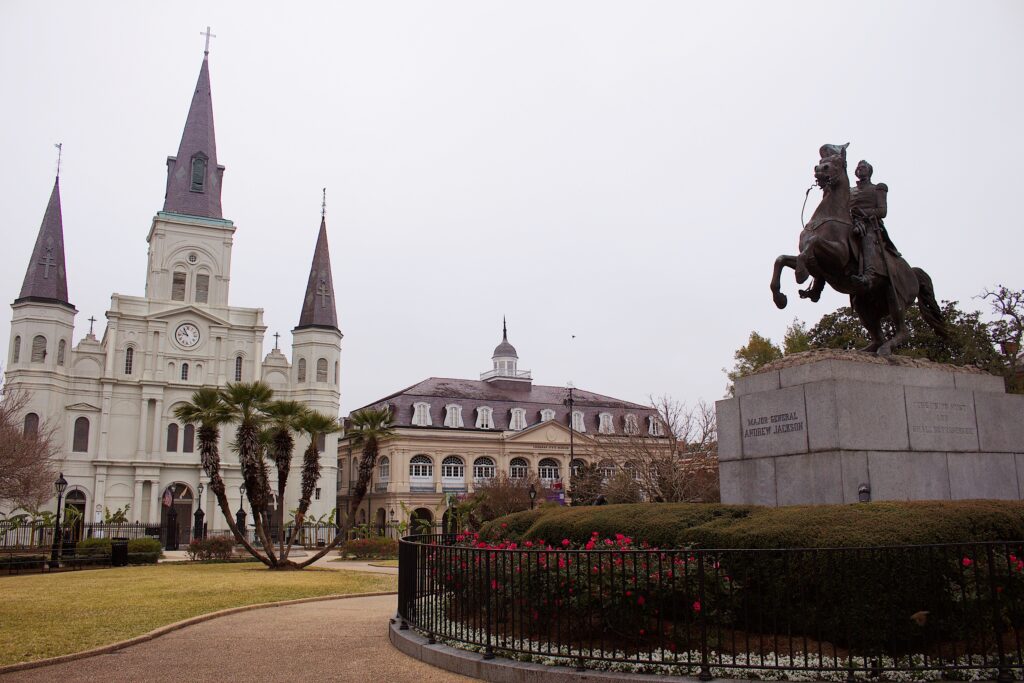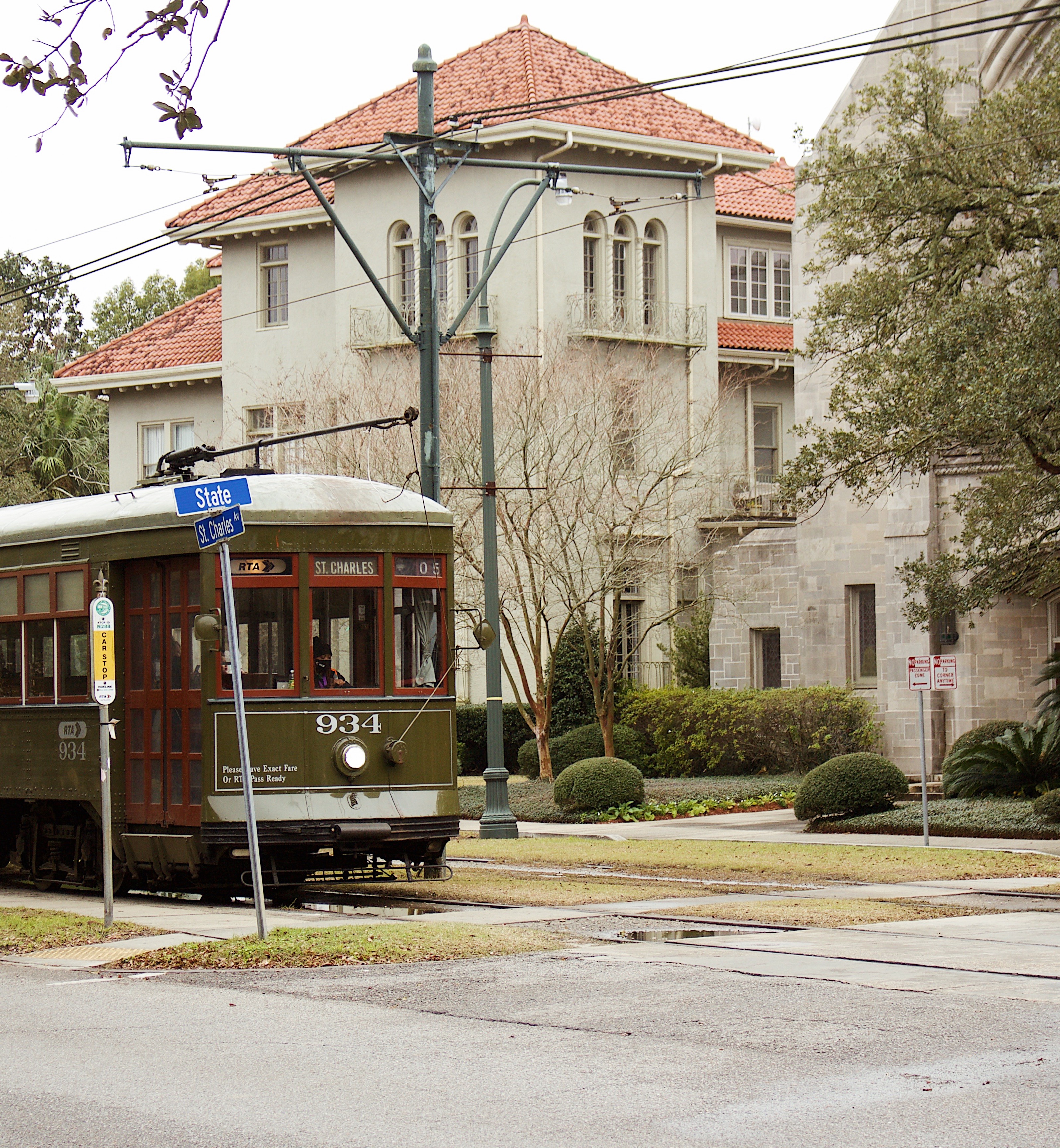If you’re looking for destinations to visit this year, New Orleans should be on your list. Though it’s located in the southern state of Louisiana, New Orleans is unlike any city in the south. One thing that makes New Orleans so unique is its vibrant night life and diverse history, combining African, French, and American cultures. If you do decide to travel to New Orleans this year, here are some things to keep in mind!

Where to Stay
I highly recommend staying in the French Quarter or just outside of it when you go to New Orleans because this is where you’ll likely spend most of your time. If you’re on a tight budget, you may find more affordable accommodation less central to the city. As with most major cities, however, it’s more convenient to pay a little extra to stay in the best location and walk everywhere you go. New Orleans also has a streetcar you can ride to surrounding neighborhoods so you don’t have to worry about driving/parking.
In my experience, finding a high-quality Airbnb in the French Quarter for less than $100/night is very difficult. The good news is, there are several airbnbs between $100-$200/night with amazing reviews. If you’re concerned about safety, New Orleans also has great hotels, usually with parking garages and security at the entrance. This was my experience when my friends and I stayed in The Marquee Hotel by Bluegreen Vacations.
Incredible Food
If you’re traveling to New Orleans, you’re probably looking forward to some incredible food. As it’s located on the Mississippi River and is not far from the Gulf of Mexico, New Orleans is known for having amazing seafood and creole cuisine. From Deanie’s Seafood to Arnaud’s, New Orleans has something for everyone to try. Even if you don’t love seafood, I highly encourage you to give New Orleans a chance to impress you with their creole and Cajun cuisine. Some dishes to look for and try include po-boys, red beans and rice, gumbo, jambalaya, Étouffée, turtle soup, and muffulettas (round sandwiches stuffed with deli meats).

Seafood
If you’re willing to spend a little more on an elegant night out, GW Fins is one of the best restaurants I’ve ever been to and will not disappoint (unless you just hate seafood). The service left us feeling like royalty. The food was perfectly portioned and well-seasoned. Yes, it’s expensive, but honestly worth every penny if you want a quality experience.
If you enjoy seafood and want to experience more of the New Orleans food scene without breaking the bank, there are several restaurants with oysters on their menu at an affordable price. MRB Bar and Kitchen is one of these and is located in the French Quarter near Jackson Square. Superior Seafood and Oyster Bar is a bit more on the expensive side and not as close to the French Quarter but the oysters were delicious, and their menu has several unique dishes worth trying like the crawfish cornbread, mac and cheese, and beignets.
Beignets
In addition to seafood, New Orleans is popular for its beignets. One of the most popular locations serving them in NOLA is, of course, Cafe du Monde. In all honesty, it’s a bit underwhelming when there are beignets being sold on nearly every street, but it’s still worth visiting just to say you went there. The beignets are perfect for a morning or afternoon treat and pair well with a hot chocolate or latte, which are also sold at the cafe.

French Quarter
The French Quarter is the life of New Orleans and most people’s destination when they travel here. This is where you can find different activities from museums to food tours. As the oldest neighborhood in New Orleans, the French Quarter is also the place where many popular streets are located, such as Canal Street, Bourbon Street, and Royal Street, one of the most beautiful streets in the city. Canal Street is unique because it remains one of the widest streets in the U.S. and once served as a boundary between neighborhoods. Today, many parades take place on Canal Street as it’s a popular source of nightlife and shopping.

It doesn’t take long to see why this neighborhood is popular for its architecture and history. Many of the buildings in the French Quarter are not just beautiful but also believed to be haunted, such as the LaLaurie Mansion. If you’re interested in seeing it, you can look into attending a ghost tour when you travel to New Orleans (the city has many).
Jackson Square
This historic park in the French Quarter is located on Decatur Street, parallel to the Mississippi River. The park is considered a National Historic Landmark as it’s where Louisiana became United States territory in the 18th century when it was known as “Place d’Armes.” It was renamed in 1851 to honor Andrew Jackson after he successfully led the United States Army against the British Army in the Battle of New Orleans in 1815.

This historic cathedral beyond Jackson Square is the oldest operating cathedral in the United States. The structure was built in 1727 and dedicated to King Louis the IX. Due to a fire in 1788, the structure seen today isn’t the original, but is still impressive and an iconic feature of New Orleans that you should see when you travel there.
French Market
The French Market is the French Quarter’s public market, located next to Jackson Square. The market has a variety of restaurants and cafes, souvenir shops, and occasional events, with different vendors to appreciate. This market has been destroyed and rebuilt several times since 1791 and remains as a historic symbol of pride in the city.

Bourbon Street
Named after a French royal family, Bourbon Street has become one of the most popular streets in the French Quarter. It’s now well-known for having a variety of pubs and bars, providing a fun scene for adults who travel to New Orleans. That being said, I definitely wouldn’t bring kids here, and if you don’t drink, you can intend on a very brief visit just to say you’ve been there.
Something to keep in mind when visiting New Orleans is that the scene on Bourbon Street is very different depending on the time of day you go. It’s not as busy during the day and easier to see everything, while at night it becomes incredibly crowded and chaotic. The later you go, the more lively it is. You’re free to consume alcohol on the street which means there are several vendors selling alcoholic beverages and even providing plastic cups called “go-cups.” If Bourbon Street is on your New Orleans itinerary, remember to be careful and keep your guard up since intoxicated tourists are the perfect target for scammers and pickpocketing.
New Orleans Streetcars
Streetcars are, in my opinion, the best way for tourists to travel beyond the French Quarter when visiting New Orleans. Though it may not be the most efficient due to many stops along the way, it’s a great way to see more of the city without going over budget or having to walk everywhere. For example, the St. Charles line can take you from Canal Street all the way to South Carrollton Ave on a vintage green trolley. This means you get to see much of Uptown and the historic Garden District without ever getting off, though it can also be fun to stroll through the Garden District on foot so you can shop and admire more of the beautiful houses there.

Other streetcars in New Orleans are the Canal Streetcar and the Riverfront Streetcar. The bright red Canal trolleys display the name of their destination on each car so you can easily identify which one to ride. Similarly, the Riverfront Streetcar is bright red and, as its name suggests, provides views of the Mississippi River as you ride along. Day passes for New Orleans trolleys can be purchased for as little as $3, or a one-way trip is only $1.25.
Museums
In addition to amazing food, nightlife, and a vibrant music-scene, New Orleans has incredible history. You can learn about its history in one of the various museums located in the city, whether it be the New Orleans Art Museum, Jazz Museum, or even the Southern Food and Beverage Museum. New Orleans is also home to the National WWII Museum (formerly the National D-Day Museum), and a variety of others.

Cemetery Tours
Another way to learn about the history of New Orleans is by attending a cemetery or walking tour around the city. The cemeteries in New Orleans are unique due to most tombs being above-ground. This is because the water table is so high, causing in-ground tombs to be dislodged.
Within the French Quarter specifically, you can tour St. Louis Cemetery No. 1 and 2. These cemeteries are closed to the public due to vandalism but do offer tours and contain some of the oldest tombs in New Orleans belonging to many fascinating people. Additionally, the Lafayette Cemeteries are located in the Lower Garden District and are free to explore, though paid tours are often more informative. Beyond these areas there are several other cemeteries to consider.
Have you been to New Orleans? What was the best part?
